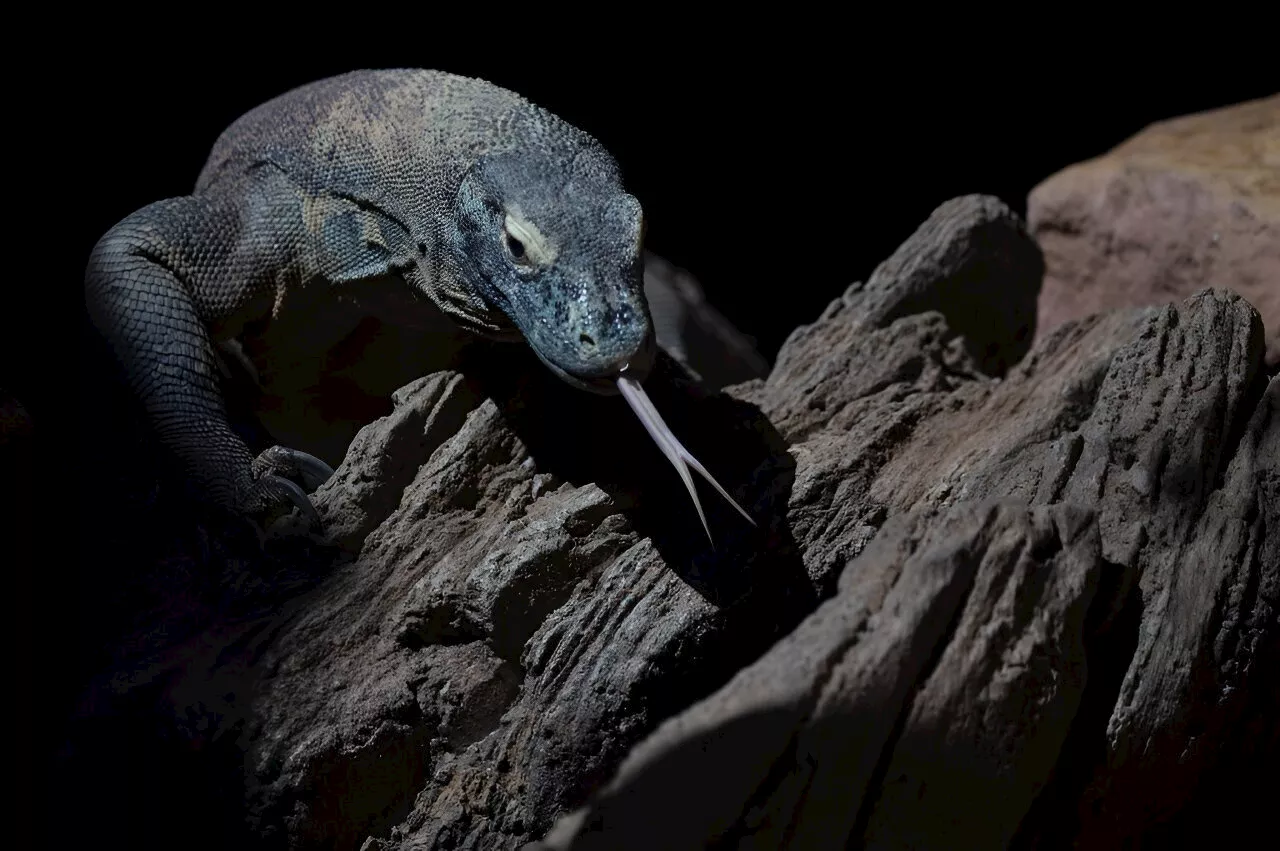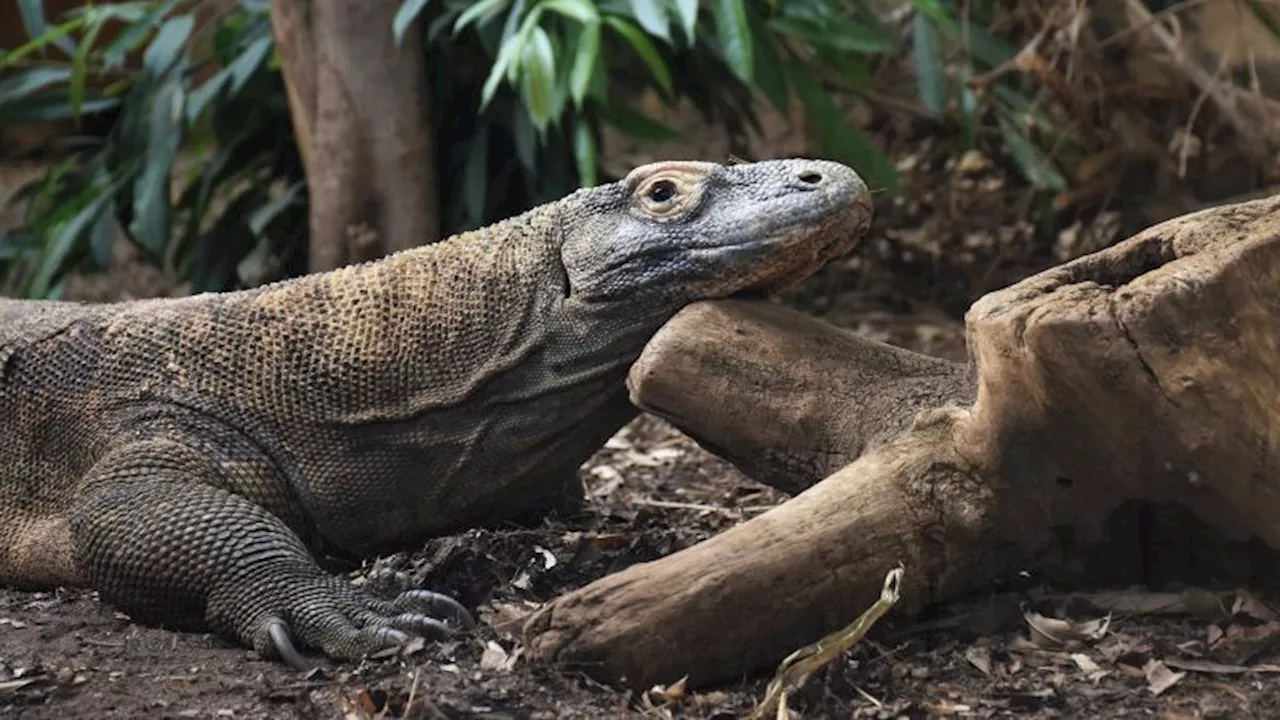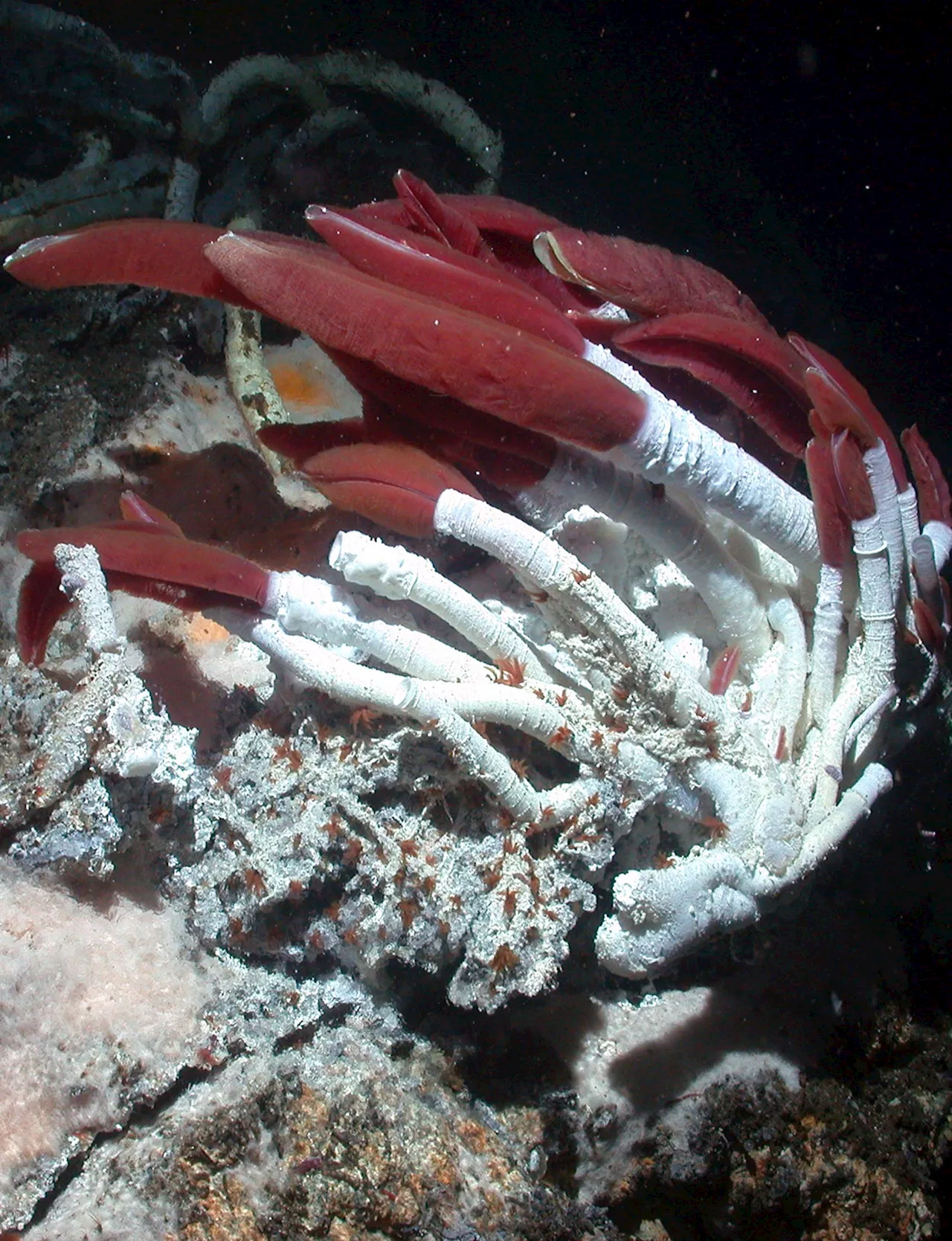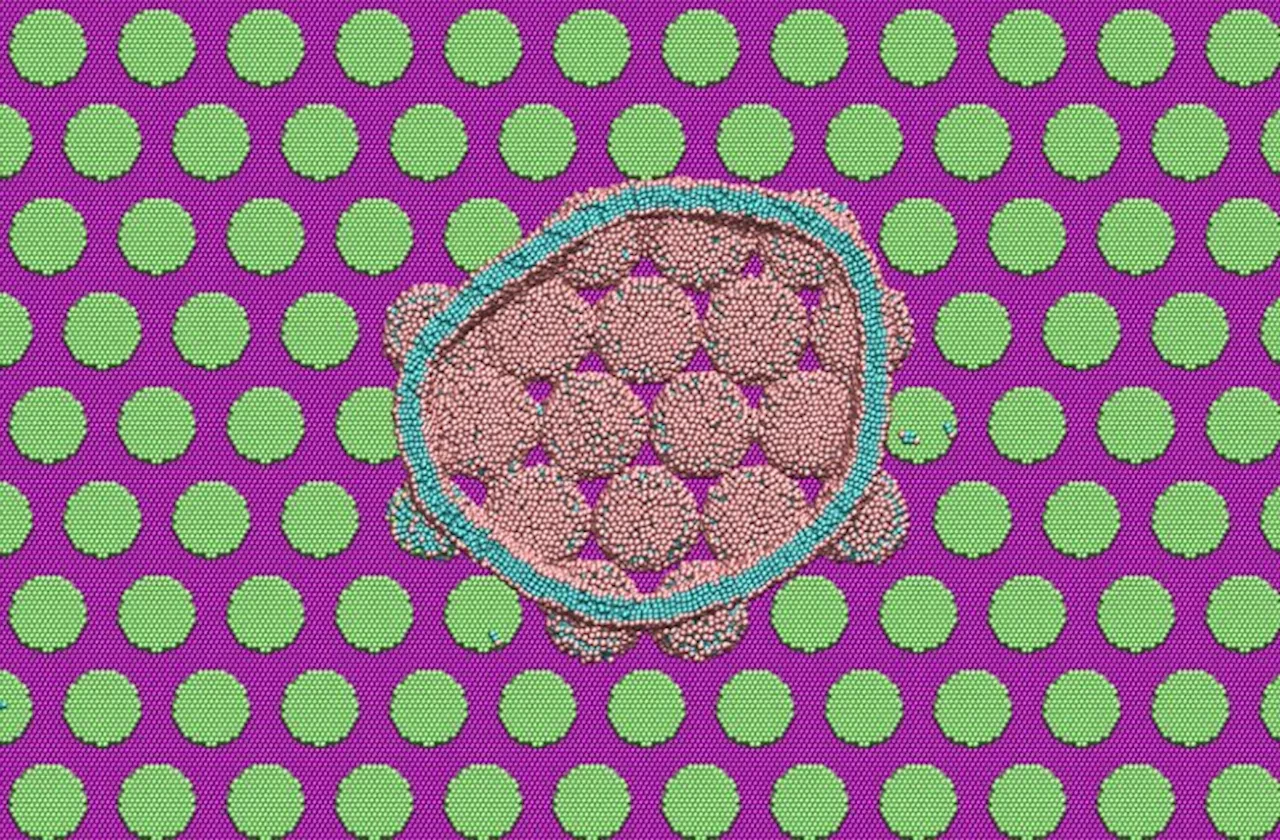Scientists have discovered that the serrated edges of Komodo dragons' teeth are tipped with iron. The study gives new insight into how Komodo dragons keep their teeth razor-sharp and may provide clues to how dinosaurs like Tyrannosaurus rex killed and ate their prey.
Scientists have discovered that the serrated edges of Komodo dragons' teeth are tipped with iron. The study gives new insight into how Komodo dragons keep their teeth razor-sharp and may provide clues to how dinosaurs like Tyrannosaurus rex killed and ate their prey.Led by researchers from King's College London, the study gives new insight into how Komodo dragons keep their teeth razor-sharp and may provide clues to how dinosaurs like Tyrannosaurus rex killed and ate their prey.
To understand the chemical and structural make-up of Komodo dragon's teeth, scientists scoured museums for skulls and teeth of Komodo dragons and studied the teeth of Ganas, the 15-year-old Komodo dragon who had lived at ZSL conservation zoo, London Zoo. Dr Aaron LeBlanc, lecturer in Dental Biosciences at King's College London and the study's lead author said:"Komodo dragons have curved, serrated teeth to rip and tear their prey just like those of meat-eating dinosaurs. We want to use this similarity to learn more about how carnivorous dinosaurs might have ate and if they used iron in their teeth the same way as the Komodo dragon.
"With further analysis of the Komodo teeth we may be able to find other markers in the iron coating that aren't changed during fossilisation. With markers like that we would know with certainty whether dinosaurs also had iron-coated teeth and have a greater understanding of these ferocious predators."
Scratches on dinosaur teeth could reveal what they really ate. Dental microwear texture analysis has now been used to infer the feeding habits of large theropods, including Allosaurus and T. ...
Frogs And Reptiles Wild Animals New Species Dinosaurs Tyrannosaurus Rex Paleontology Origin Of Life
United States Latest News, United States Headlines
Similar News:You can also read news stories similar to this one that we have collected from other news sources.
 Komodo dragons have teeth coated in iron to kill prey, study findsThe fearsome Komodo dragon, native to Indonesia and the world's largest living lizard, has a coat of iron on its razor-like teeth to help it kill its prey, scientists found in a study published Wednesday.
Komodo dragons have teeth coated in iron to kill prey, study findsThe fearsome Komodo dragon, native to Indonesia and the world's largest living lizard, has a coat of iron on its razor-like teeth to help it kill its prey, scientists found in a study published Wednesday.
Read more »
 Komodo dragons have iron-tipped teeth, new study showsKomodo dragons, the world’s largest species of lizard, have iron-tipped teeth that help them to rip their prey apart, according to new research.
Komodo dragons have iron-tipped teeth, new study showsKomodo dragons, the world’s largest species of lizard, have iron-tipped teeth that help them to rip their prey apart, according to new research.
Read more »
 This ‘House of the Dragon’-Inspired Adventure Will Take You to Visit Komodo Dragons in IndonesiaIndonesia's Ta’aktanan resort just launched a new island-hopping adventure featuring a luxury charter and encounters with Komodo dragons.
This ‘House of the Dragon’-Inspired Adventure Will Take You to Visit Komodo Dragons in IndonesiaIndonesia's Ta’aktanan resort just launched a new island-hopping adventure featuring a luxury charter and encounters with Komodo dragons.
Read more »
 Scientists discover way to 'grow' sub-nanometer sized transistorsA research team led by Director Jo Moon-Ho of the Center for Van der Waals Quantum Solids within the Institute for Basic Science (IBS) has implemented a novel method to achieve epitaxial growth of 1D metallic materials with a width of less than 1 nm. The group applied this process to develop a new structure for 2D semiconductor logic circuits.
Scientists discover way to 'grow' sub-nanometer sized transistorsA research team led by Director Jo Moon-Ho of the Center for Van der Waals Quantum Solids within the Institute for Basic Science (IBS) has implemented a novel method to achieve epitaxial growth of 1D metallic materials with a width of less than 1 nm. The group applied this process to develop a new structure for 2D semiconductor logic circuits.
Read more »
 Harvard Scientists Reveal Amazing Survival Strategies of Giant Deep-Sea Vent TubewormScience, Space and Technology News 2024
Harvard Scientists Reveal Amazing Survival Strategies of Giant Deep-Sea Vent TubewormScience, Space and Technology News 2024
Read more »
 By mimicking cicada wings, scientists are investigating new ways to keep patients safeCicada's cries ring out in the hot air and their discarded exoskeletons decorate tree branches in the southeast and midwest United States at the height of summer. While their ability to emerge in huge numbers is astounding, they have other surprising features too. In fact, their wings kill bacteria on contact and are self-cleaning.
By mimicking cicada wings, scientists are investigating new ways to keep patients safeCicada's cries ring out in the hot air and their discarded exoskeletons decorate tree branches in the southeast and midwest United States at the height of summer. While their ability to emerge in huge numbers is astounding, they have other surprising features too. In fact, their wings kill bacteria on contact and are self-cleaning.
Read more »
